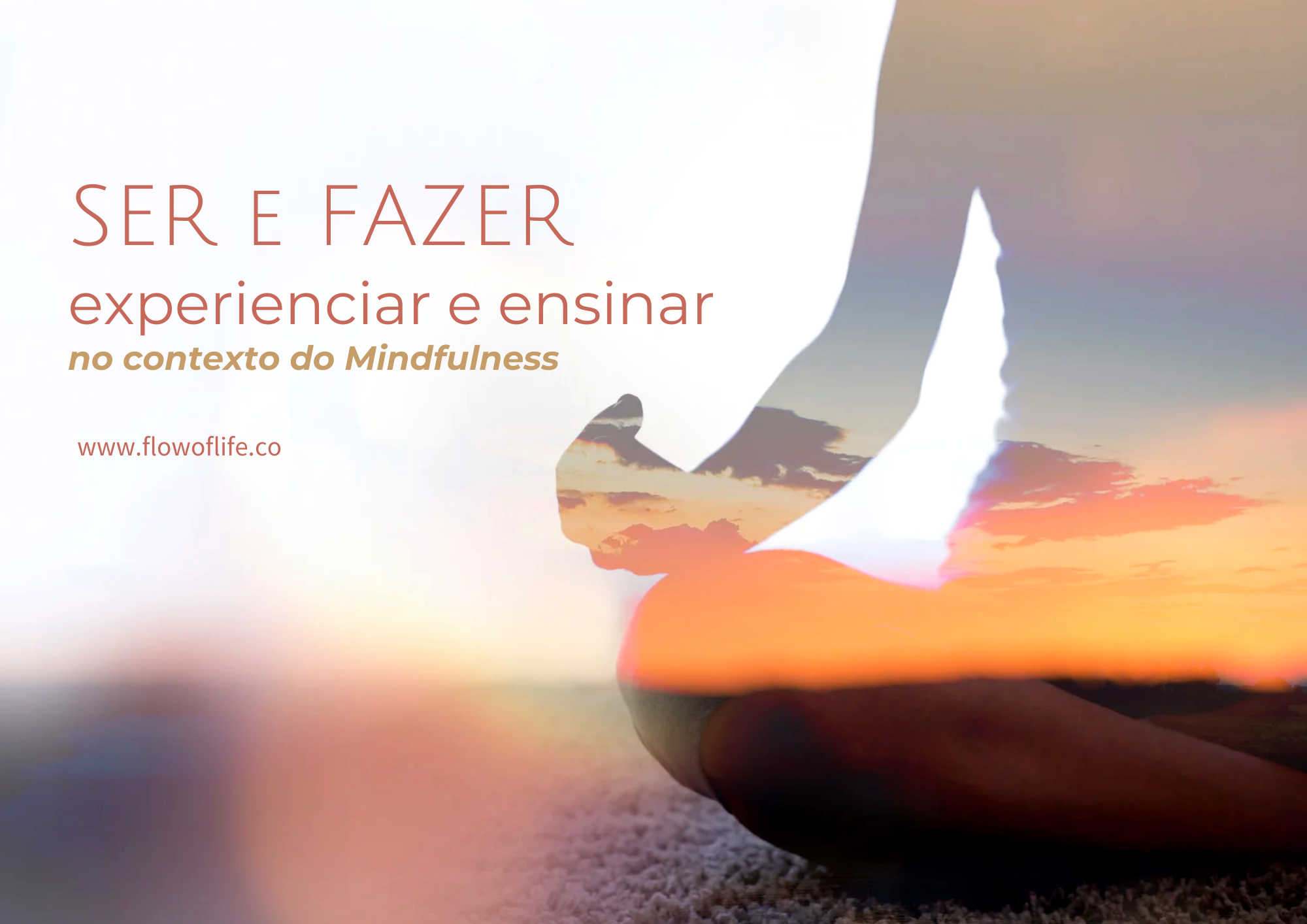In today's world, marked by speed and superficiality, the challenge of being authentic and present in our actions is becoming increasingly evident. In this context, Mindfulness emerges as a practice that restores the connection between "being" and "doing". For Mindfulness teachers, this integration is fundamental, because teaching this approach goes beyond transmitting techniques; it requires being a living example of the principles that underpin it.
O "be" in Mindfulness represents the essence of the practice: the ability to be fully present, with acceptance and curiosity, in the here and now. Before teaching, it is necessary to experience this presence. The teacher who cultivates Mindfulness in their own life demonstrates, through their attitudes, the calm, empathy and clarity that the practice promotes. As Jon Kabat-Zinn, creator of the Mindfulness-Based Stress Reduction (MBSR) program, says, "you can't ask your students to go to places where you yourself have never been". Thus, "being" precedes "doing" and gives credibility to the act of teaching.
On the other hand "do" represents the practical application of Mindfulness. Teaching requires planning, technique and adaptation to the needs of each student or group. However, "doing" without "being" risks becoming mechanical, too technical or lacking in depth. The effectiveness of the Mindfulness teacher lies in the balance between the two. They don't just lead meditations or explain concepts, but guide students through their own experience, creating a safe and welcoming space for learning.
Setting an example as a Mindfulness teacher requires consistency and commitment. It is essential to maintain a regular personal practice and seek continuous improvement, both in terms of technique and self-knowledge. In addition, it is crucial to practice what you preach outside the context of your classes, demonstrating mindfulness in everyday interactions and adversity. This consistency inspires students to integrate Mindfulness into their own lives, making learning more meaningful and transformative.
Therefore, teaching Mindfulness is an act that requires harmony between the "being" and "doing". Experiencing the practice and living it in a genuine way are prerequisites for teaching with authenticity and impact. The teacher who aspires to the principles of Mindfulness becomes a living example, capable of transmitting not just techniques, but a way of being in the world. In this way, teaching transcends the technical field and reaches the realm of the human, promoting a profound transformation in both the teacher and the students.
Scientific evidence reinforces the importance of experiencing Mindfulness before teaching it, both for the quality of teaching and for the benefits offered to students. A study carried out by psychologist Ruth Crane and published in 2010 in the Journal of Behavioral Medicine found that Mindfulness teachers with a consistent personal practice were better able to guide groups effectively and create an environment of trust and acceptance. This practical experience of the instructors contributes to the development of a deeper relationship between the participants and the practice.
In addition, the impact of the teacher as a model of Mindfulness has been explored in research into the effectiveness of Mindfulness-based interventions. According to Galla (2016), in an article published in 'Mindfulness', instructors who practice regularly demonstrate a greater ability to convey the principles of mindfulness in a practical and accessible way, making it easier for students to apply these concepts in their daily lives. This suggests that the "being" of the teacher directly influences the success of the interventions and the retention of the practice by the students.
Another relevant aspect is the neuroscience of mindfulness. Numerous studies and publications show that the regular practice of mindfulness is associated with changes in brain structure, such as an increase in gray matter density in the prefrontal cortex and hippocampus, areas related to emotional regulation and learning. Teachers who experience these benefits themselves are better able to communicate and exemplify the transformative effects of the practice.
In the context of education, Roeser et al. (2013), in a study published in the journal Mindfulness, examined the impact of Mindfulness on teachers and concluded that those who practiced regularly had lower stress levels, greater empathy and better classroom management skills. These data confirm that being a model of Mindfulness not only enriches the students' experience, but also strengthens the instructor's own mental health and well-being.
This evidence supports the idea that the balance between "being" and "doing" is indispensable for teachers of the technique. Practical experience of Mindfulness is the foundation of authentic and transformative teaching. Without this personal commitment, teaching risks becoming superficial, depriving students of the profound benefits that Mindfulness can provide. Therefore, the teacher's example is both a means of teaching and a practical demonstration of the power of this approach.
In short, the balance between "being" and "doing" is essential for teaching Mindfulness in an authentic and impactful way. The personal experience of the practice not only enriches the students' experience, but also transforms the teacher, making him or her a living example of the benefits that mindfulness can offer. In this context, don't accept training based only on theoretical content or online training. Training in an immersive retreat format is necessary and transformative! Continuous personal practice and commitment to learning are indispensable for anyone who wants to teach with excellence.
If you feel called to experience this transformation and inspire others, we invite you to become a mindfulness instructor at Flow of Life - School of Full Consciousness. Our training program combines theory, practice and personal experience, preparing you to teach with confidence and depth. Join a community committed to promoting health, well-being and self-knowledge.
Access our contacts and take the first step towards transforming your life and the lives of others through Mindfulness. Be the example the world needs and discover the power of teaching from your own presence.




